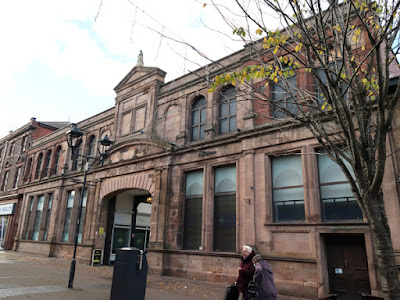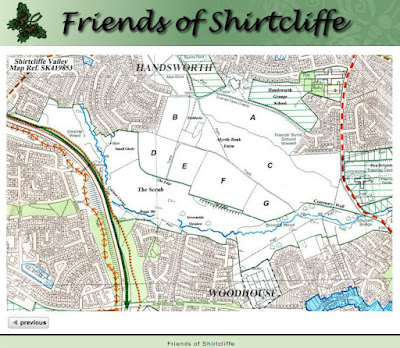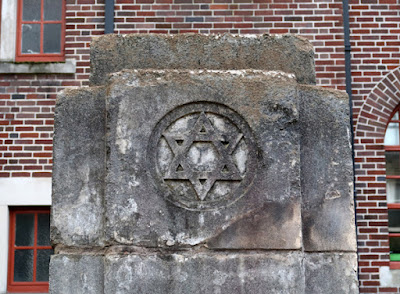 |
| A salvaged headstop at St. Marks's church |
On the Monday following a rather depressing Saturday afternoon in Rotherham, I made the most of another sunny day in late November by further exploring the suburbs of Broomhill and Broomhall in Sheffield, with my primary objective being to photograph its listed buildings.
Except for a quick walk around the Broomhall and Endcliffe Conservation Areas, just over a week earlier, I had never explored this part of the city and, having entered a postcode in the Listed Buildings Photo Challenge search form on the British Listed Buildings website, I just planned a route around some of the buildings that did not yet have a photo.
Taking the No. 120 bus from High Street and alighting at the bus stop on Glossop Road just beyond the junction with Clarkehouse Road, I immediately noticed the Grade II Listed No. 440 Glossop Road (c1840) and the unlisted Broomfield House, which was built some time between 1851 and 1889 (according to the old Ordnance Survey maps) on the adjacent plot.
Looking at these in bright sunshine from the opposite side of the road, I couldn’t see any difference between the sandstone used for these buildings but, when examining my high resolution photos, I can see that the sandstone used for No. 440 has a moderate amount of iron staining and feint Liesegang rings, whereas that used for Broomfield House is uniformly buff in colour.
Without having got close enough to examine the sandstones used for these buildings, I have just assumed that No. 440 is built with a local sandstone, but Broomfield House may well be built with Stoke Hall stone (Kinderscout Grit) from Grindleford in Derbyshire or Crosland Hill stone (Rough Rock) from Huddersfield in West Yorkshire, both of which had by now been brought to Sheffield to be used respectively for dressings in the Sheffield Board Schools and for the ashlar at the Central Schools on Leopold Street.
Next on my list of buildings to photograph was St. Mark’s church, which was completed in 1871 to a neo-Gothic design by William Henry Crossland, but during the Sheffield Blitz in WWII it was largely destroyed by an incendiary bomb, with only the tower and porch left remaining.
The architect George Gaze Pace restored the tower in 1955 and the church was rebuilt in a modernist style between 1961 and 1963, with a reinforced concrete frame being clad in irregularly coursed rock-faced masonry, which uses coarse grained sandstone that has a substantial amount of pink to red colour variation, which I had not seen before in Sheffield.
Very unusually, the church is laid out with an irregular polygonal floor plan, which was likened by Pace to an extended hexagon and the fabric makes extensive use of artificial stone for lintels, transoms and for the irregular tracery to the east window. Personally, I am not a great fan of this church - as also with Christ Church in Fulwood - and I was mainly curious about the provenance of the sandstones used for the new church and the original tower.
Although without examining it with my hand lens, looking more closely at a section of masonry on the south side of the nave, the general colour variation in the sandstone does have some similarities with local gritty sandstones like the Chatsworth Grit or even the Loxley Edge Rock; however, I suspect the quarrying industry in Sheffield, which unlike West Yorkshire served only local needs, was no longer able to supply the quantities of stone needed for this church.
Perhaps an extensive search in the Sheffield City Archives and Local Studies Library might throw further light on the matter but, except for lists of quarries produced by Farey (1811), Hunt (1858) and the List of Mines and Quarries (1897) held at the British Geological Survey – which just provide brief details of the geological formation worked and some of the products – documentation seems to be quite scarce.
Referring to the couple of photographs of the tower that I took, the sandstone used is yellowish/buff in colour, has a moderate amount of iron staining and seems to be quite soft - contrasting with the more durable sandstone used for the dressings and headstops - but the whole building really needs a more thorough examination.
 |
| Headstops on the old south porch |
Having had a brief look at the exterior, I popped inside the church but, although its modern stained glass is considered to be quite noteworthy, there isn't much stonework of great interest to see, with the highlight being the Derbyshire fossil marble used for the pulpit.

















































